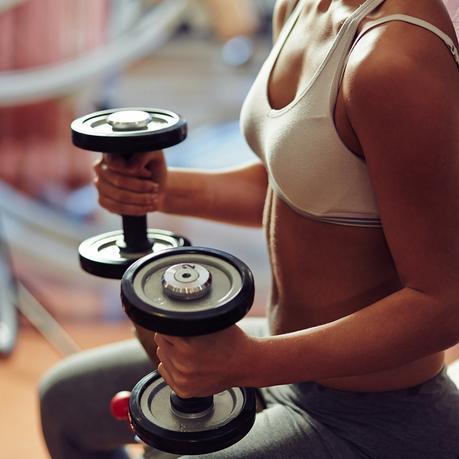
Ways To Reduce Belly Fat
The information superhighway that is the internet has proven to be a double edged sword. Intricately detailed or little-known information is readily available. Answers to questions that historically required significant thought and time investment can be resolved at the blink of an eye, satisfying our never-ending quest for knowledge. On the flip side, this wealth of information can be overwhelming.
Nowhere is this more evident than in the world of fitness. There is so much 'guidance', so many conflicting viewpoints, and so many self confessed gurus who passionately espouse their views. The hapless gym goer is often left reeling in a quagmire of confusion.
7 Truths Of Fat Loss
Admittedly, there are still a lot of things that we don't fully understand when it comes to health and fitness. Researchers are continually uncovering new and improved theories on how to reduce belly fat, improve physical fitness or optimise health.
However, today I want to clarify a few important things we DO know about moulding your body into tip-top shape. The following 7 truths will enable you to avoid speculation and wild-haired theories you may have gleaned online - and focus on a few things that do matter when losing weight.
Lift heavier weights to stress your muscles

Heavier weights stress muscles for growth
Let’s address the elephant in the room first. Why do you need to lift weights at all? After all, your goal is simply to tone or drop a couple of dress sizes right? Well, I don’t suppose you do if you're vehemently opposed to it.
But before you dismiss the idea altogether, consider this. A number of studies including this one by a Harvard University research team suggest that weight training is the key to controlling abdominal fat.
The theory is that weight training promotes lean muscle development, increases your resting metabolic rate, as well as providing a significant calorie burn post training. In fact some studies have suggested weight training burns calories for up to 38 hours after a workout. Have a read of our previous article where we examine the cardio vs weight training debate.
If you are not already including weight training in your weekly fat loss routine, it might be time to consider it. Another common misconception of strength training is that you will all of a sudden become muscle bound and bulky. Fear not. Muscle is more dense than fat. Adding muscle to your frame will actually make you look leaner.
Yes, you’ve seen images of body builders and don't find them particularly appealing. Don't worry. These guys and girls spend hours per day in the gym specifically with the goal of building muscle in mind.
Ok, hopefully we've established you should include weight training in your routine to promote lean muscle development. So how do we approach this?
The stimulus for muscle growth occurs when muscle cells are damaged. Weight training creates micro tears in your muscle fibres. It is the subsequent repair of this damage that develops and strengthens musculature.
The body responds to muscle damage by increasing protein synthesis, which occurs during periods of rest. To break down muscle tissue you have to provide a significant amount of stress to the muscle.
You can’t just lift a bunch of light weights and set in motion a miraculous adaptation that leads to muscle growth. To make it work, you need to lift challenging weights that you generally can’t move beyond 12 to 15 times.
But lifting light weights is for toning, heavier weights are for building muscle size right?
Ah no. This idea has done the rounds for an eternity it seems. I’m not sure where it came from originally. Yes, higher reps with a lighter weight will improve muscle endurance… but heavier weights lifted to fatigue are more effective at building strength, boosting metabolism and reducing fat.
Eating more protein helps with weight loss

protein and weight loss
Muscles grow because of a net increase in whole body protein – the difference between protein breakdown and protein buildup. Following exercise you need amino acids from protein to repair muscle damage incurred during your workout.
When you consume proteins in food your body breaks them down into amino acids to be used by your body to create it's own proteins. If a diet is insufficient in protein the body can become deficient in vital amino acids. This can impair muscle growth and repair.
How much protein? This is a heavily debated topic. Some experts believe you should take in 1 gram of protein for every pound of bodyweight. It’s critical protein is released into your system immediately after your workout. It should also be ingested every few hours to keep a regular supply of amino acids rushing into the bloodstream.
RELATED The Power Of Protein – Protein Foods That Help Burn Fat
Consistency is the key to results
This will probably come as no surprise. It's important to make exercise a habitual part of your life if you want to make consistent gains. You've heard it all before I know! Sporadic attempts at exercising won't provide long term gains.
Yes, there are legitimate reasons to miss a workout from time to time. These may include sickness or recovery. However, in the grand scheme of things missing a workout needs to become a rarity.
The speed at which you lose fitness you have gained can be astonishing. One particular study took 10 healthy young men and reduced their number of daily steps by more than 85% - from a baseline of approximately 10,000 per day to 1300. In just two short weeks a 7% decline in VO2Max was observed as well as significant reductions in lean leg mass. Just two weeks!
The American College of Sports Medicine also suggests that two weeks of detraining (or de-conditioning) can result in a significant decline in aerobic capacity. Thankfully, muscle strength declines tend to occur more slowly. While the rate at which we lose fitness depends on age, level of fitness, and exercise history, after two to eight months abstaining from exercise virtually all fitness gains can be lost.
It is really important to maintain consistency of training to continue to optimise or perpetuate your weight loss, fitness or muscular gains. Over time your workouts also need to evolve (known as the overload principle). You must gradually increase the workload to ensure progression.
Rest is really important too

rest important for weight training
Yes, it is important to work hard when at the gym or in your preferred training environment. However, the time when you are not training is equally important for muscle repair and growth. Rest and recovery are critical components of fitness gains. It is imperative that you focus on the key factors that improve your training effect including correct nutrition, sufficient sleep (sleep your way to more muscle), and minimising stress . Here are 5 surprising ways that stress can affect your workout.
How much rest between workouts? There really is no one size fits all approach. Some sources suggest 48 hours is necessary between weight training workouts. In reality recovery rates may vary between people, the best monitor for recovery is muscle soreness. Ideally you should allow muscles or body parts to regain strength and recuperate from a previous workout. Although working a body part when it’s still sore is occasionally permissible, it can eventually impair your performance. You should also take into account the intensity of a previous workout, frequency and duration. Keep a close eye on for tell tale signs your body has not recovered from a workout. Remember, muscles adapt and become stronger during rest periods, not during exercise.
Change your routine every 4-6 weeks
How regularly should you change your workout? When it comes to ways to reduce belly fat or improve ongoing muscle gains remember you need to change your routine regularly. After a period of time on the same routine improvements can plateau. Adjust your program frequently enough to stimulate ongoing adaptation.
Some sources believe your should change a workout every 6-8 weeks . Bret Contreras, trainer of Olympic and Pro athletes, suggests “if your lifts have not increased for 4 weeks," its time to make a change. Another reason for change might be if you are in a fitness rut.
Changes however can be subtle and variety can be introduced several ways to ‘trick’ your muscles into responding. Mike Donavan suggests changing up at least two of the F.I.T.T. principles (frequency, intensity, time or type) every 4-6 weeks to keep gains moving in the right direction.
Perhaps a slight elevation in rep ranges, weight, the type of contraction used (concentric, isometric, eccentric), speed of movement, range of motion or the actual type of exercise could be employed. For example - in the weight room increase the reps or sets for the same weight. Add some more weight and try to complete the same volume of reps as previous. Alternatively, throw in a couple of exercises you haven't attempted in a while to replace a couple of other ones getting stale.
High intensity training is a must

High intensity interval training and weight loss
Intensity is a very important factor when looking to transform your physique. I mentioned earlier that if you don’t damage muscle fibers during workouts, you won’t create a stimulus for new muscle growth. And that increasing lean muscle is key to boosting calorie burning and weight loss.
So what does high intensity look like? An old gym maxim puts it succinctly: Do as many reps as you can – then do three more! But intensity doesn't just refer to your actions in the weight room.
High intensity interval training (or HIIT) is a style of exercising where periods of (almost) maximal effort are interspersed with low effort recovery. Emerging research has indicated regular aerobic exercise may have minimal impact on body fat. HIIT however, may be more effective at reducing subcutaneous and abdominal fat than other forms of exercise.
RELATED: The Exercise Myth: Science Says Exercise Not The Best Way To Burn Stomach Fat
While you can perform a HIIT workout using weights or circuit training, this concept can be applied to almost any exercise form, running, cycling, swimming and more.
Eat frequently to avoid binging
Your body will only assimilate a certain amount of calories at any one sitting. If, however, you feed your body balanced meals that contain quality protein and carbohydrates throughout the day – as many as six small meals spaced out every three hours – you’ll enjoy a number of benefits, including an increase in lean muscle growth, less stomach discomfort, stable energy levels and a controlled appetite.
I'll admit, there is still a fair bit of conflicting advice on the three square meals vs mini meals topic. So long as you maintain your overall calorie intake - either can be a viable option. The reason I am an advocate of smaller more frequent meals is the regulating effect it has on blood sugar. 'After about 3 hours without food your blood sugar begins to fall' says Cleveland dietitian Amy Jamieson-Petonic. As time continues to pass blood sugar levels fall off a cliff. The result? You reach for whatever snack you can find... regardless of how healthy of otherwise it may be.
By eating smaller more frequent meals you can stave off hunger, keep your all important metabolism trucking along as well as control insulin and blood sugar levels.

